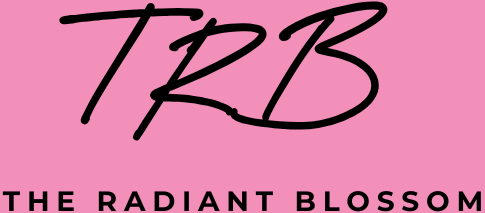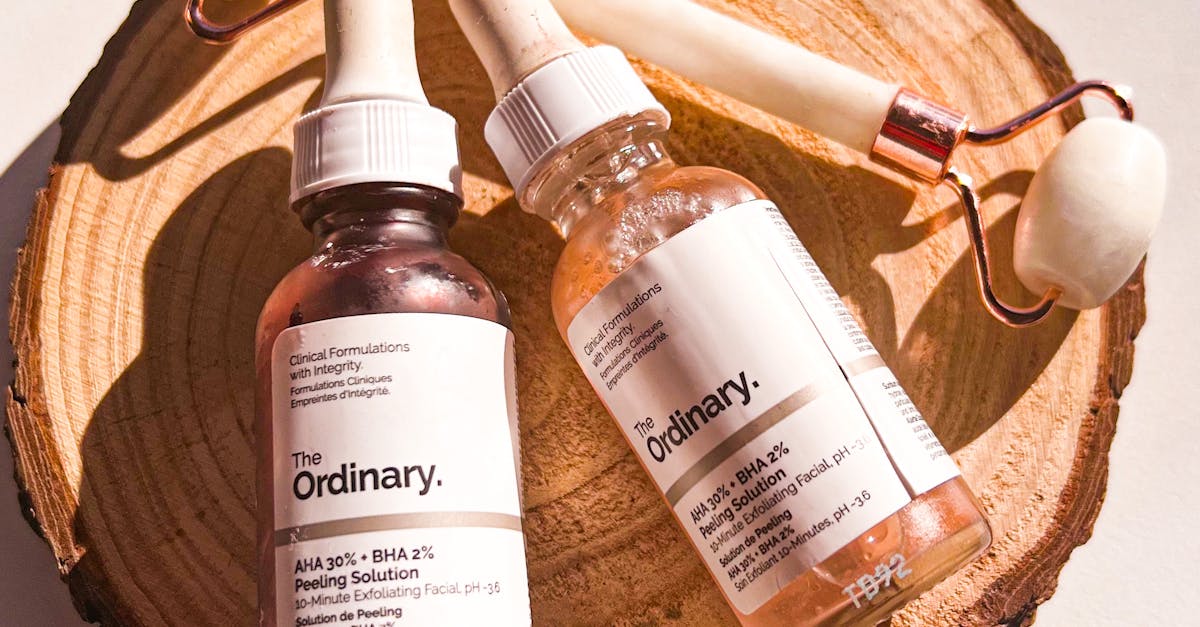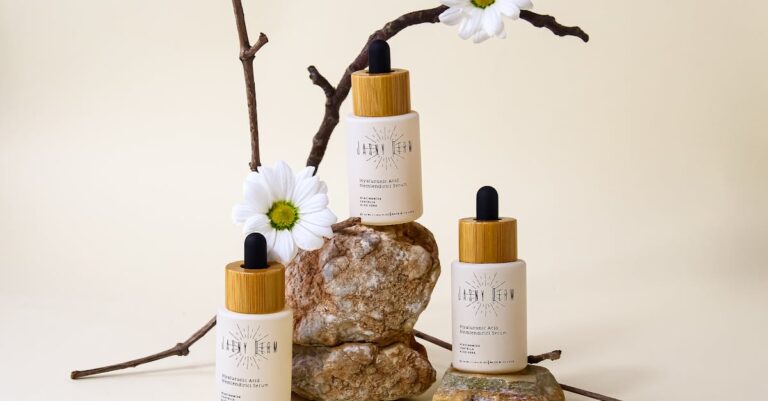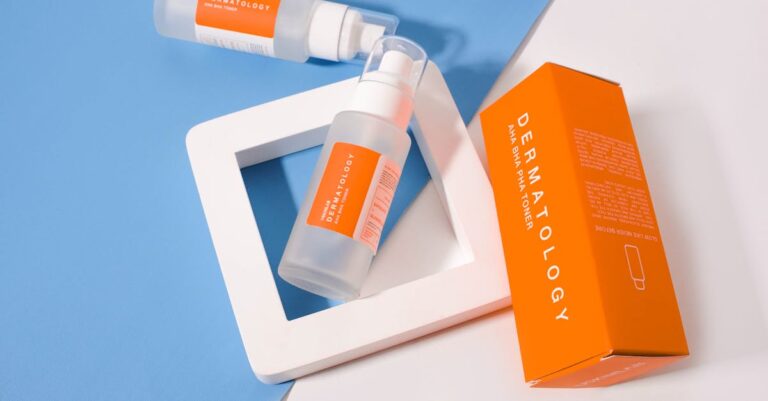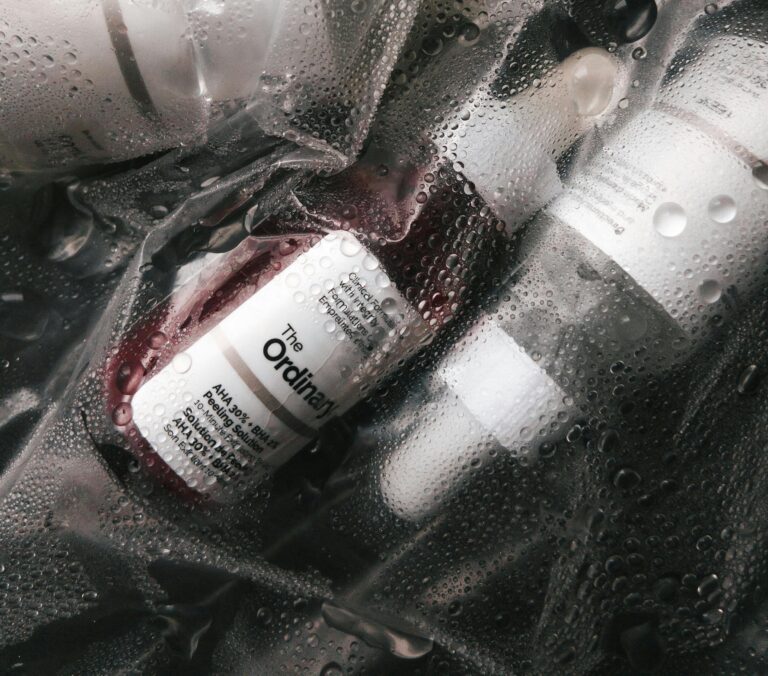In the ever-evolving world of skincare, active ingredients have become the stars of the show—and one that continues to stand out is BHA, or Beta Hydroxy Acid. Whether you’re battling breakouts, clogged pores, or rough skin texture, BHA often comes up as a recommended solution. But what exactly is it, and how does it work?
This article takes a deep dive into everything you need to know about BHA—from how it differs from its more hydrophilic cousin AHA, to who should (and shouldn’t) use it. Whether you’re a skincare newbie trying to decode product labels, or a seasoned enthusiast refining your regimen, understanding BHA can help you make smarter choices for your skin.
What is BHA?
BHA stands for Beta Hydroxy Acid, a type of chemical exfoliant used in skincare to help improve skin texture, unclog pores, and fight acne. The most common BHA used in over-the-counter skincare products is Salicylic Acid.
Unlike Alpha Hydroxy Acids (AHAs)—which are water-soluble and primarily work on the skin’s surface—BHAs are oil-soluble, meaning they can penetrate deep into the pores through sebum. This unique quality allows BHAs to exfoliate not just the outer layer of skin but also inside the pore lining, where oil, dead skin cells, and bacteria can accumulate.
Salicylic Acid is naturally derived from willow bark, though most commercial formulas use a synthetic version for stability and consistency. Its molecular structure allows it to loosen the bonds between dead skin cells, helping them shed more effectively and preventing them from clogging pores.
In short: BHA = oil-soluble, pore-penetrating, anti-acne powerhouse.
How BHA Works
The magic of BHA, particularly Salicylic Acid, lies in its oil-solubility and molecular structure. These two traits give it the unique ability to dive below the skin’s surface and work inside your pores—a key reason it’s such a go-to for acne and blackheads.
Here’s a breakdown of how it works:
1. Penetrates Deep Into Pores
Since BHA is oil-soluble, it can travel through sebum (your skin’s natural oil) and get inside congested pores. Once inside, it loosens and dissolves the mixture of dead skin cells, oil, and debris that can cause blackheads, whiteheads, and pimples.
2. Exfoliates the Skin
BHA works as a chemical exfoliant, breaking down the bonds that hold dead skin cells together. This encourages gentle, non-abrasive shedding of the top layer of skin, helping to reveal a smoother, brighter complexion underneath.
3. Anti-Inflammatory Properties
Salicylic acid has anti-inflammatory properties, which can reduce redness and swelling—especially helpful for inflamed acne like papules or pustules.
4. Antibacterial Effects
It also has mild antibacterial effects, which help prevent the growth of acne-causing bacteria (like Cutibacterium acnes), reducing the likelihood of future breakouts.
So, BHA doesn’t just exfoliate—it unclogs, calms, and clears.
Benefits of BHA in Skincare
Beta Hydroxy Acid isn’t just a one-trick exfoliating pony—it brings a bunch of skin-boosting benefits to the table. Whether you’re targeting breakouts or simply looking to refine your skin’s texture, BHA has something to offer.
1. Deep Pore Cleansing
Because it penetrates the pores, BHA is incredibly effective at clearing out excess oil, dead skin cells, and other gunk. This makes it one of the most powerful ingredients for managing and preventing blackheads and whiteheads.
2. Acne Treatment and Prevention
BHA helps treat active breakouts by reducing inflammation, unclogging pores, and targeting acne-causing bacteria. Over time, it also prevents future blemishes by keeping pores clear.
3. Smooths Rough Texture
By exfoliating dead skin cells and promoting cell turnover, BHA helps smooth out rough or bumpy areas of the skin, such as those caused by keratosis pilaris or congestion.
4. Minimizes the Appearance of Pores
While it doesn’t physically shrink pores (nothing can), BHA can make them look smaller by keeping them clean and less stretched out by buildup.
5. Fades Post-Acne Marks
With consistent use, BHA can help fade dark spots and post-inflammatory hyperpigmentation by accelerating skin renewal, though not as powerfully as some other actives like AHAs or niacinamide.
6. Calms Redness and Irritation
Its anti-inflammatory properties make it a solid option for calming rosacea-like redness or inflammation due to acne—without being overly aggressive on the skin.
In short: clearer pores, smoother texture, fewer breakouts.
Who Should Use BHA?
BHA can be a skin-changer—but it’s not for everyone. Knowing whether your skin is the right fit for this ingredient is key to seeing results without irritation.
Ideal Candidates for BHA:
- Oily Skin Types: BHA’s oil-solubility makes it a dream for oily skin. It dives deep to clear out excess sebum and prevent breakouts.
- Acne-Prone Skin: Whether you deal with blackheads, whiteheads, or full-blown cystic acne, BHA helps manage and prevent breakouts at the root.
- Combination Skin: If your T-zone tends to get congested, BHA can target those oily areas without needing to be applied all over.
- Those with Enlarged or Congested Pores: BHA can help reduce the look of large pores by keeping them free from buildup.
- People Dealing with Texture Issues: Bumpy skin from clogged pores or keratosis pilaris? BHA can help smooth that out.
Who Should Use With Caution (or Avoid)?
- Dry or Dehydrated Skin Types: BHA can be too drying if used too frequently on skin that lacks oil or moisture.
- Very Sensitive Skin: If your skin reacts easily or is prone to conditions like eczema or rosacea (unless advised by a derm), BHA might be too strong or irritating.
- People Using Strong Actives: If you’re already on retinoids or prescription treatments, layering BHA might be overkill. Always patch test or consult a dermatologist.
Basically, if clogged pores, acne, or oily zones are your skin’s nemesis, BHA might be your hero.
How to Use BHA in a Skincare Routine
Getting the most out of BHA without upsetting your skin is all about application, frequency, and pairing it smartly with other products. Here’s how to weave it into your routine effectively:
Step-by-Step: Where BHA Fits In
- Cleanser – Start with a gentle, non-stripping cleanser. You can also use a BHA-based cleanser, though leave-on products tend to be more effective.
- BHA Product – Apply your BHA (toner, serum, or liquid exfoliant) on clean, dry skin. Let it absorb for a minute or two.
- Moisturizer – Always follow with a good moisturizer to balance any potential dryness or irritation.
- Sunscreen (AM only) – BHAs can increase sun sensitivity, so a broad-spectrum SPF 30 or higher is a must in the daytime.
Frequency of Use
- Start slow: 2–3 times a week is a good starting point, especially if you’re new to acids.
- Gradually increase: If your skin tolerates it well, you can work up to daily use.
- Less is more: You don’t need to feel tingling or see peeling for it to be effective.
Forms BHA Comes In
- Toners & Exfoliating Liquids – Most popular format (e.g., Paula’s Choice BHA Liquid).
- Serums – Targeted and often paired with other ingredients.
- Cleansers – Good for oily skin, but short contact time makes them slightly less potent.
- Pads – Convenient for travel and easy application.
- Spot Treatments – Great for targeting stubborn pimples.
Tips for Best Results
- Patch test before first use.
- Avoid applying on wet skin—it can increase irritation.
- Don’t combine with other strong actives (like retinoids or high-percentage AHAs) unless your skin is experienced and tolerant.
- Listen to your skin—if it’s red, flaky, or stinging, scale back.
BHA vs. AHA: What’s the Difference?
While both AHAs (Alpha Hydroxy Acids) and BHAs (Beta Hydroxy Acids) are chemical exfoliants, they work differently and are suited for different skin concerns. Understanding how they compare can help you choose (or mix) wisely.
1. Solubility
- BHA (Beta Hydroxy Acid): Oil-soluble
→ Penetrates deep into pores to clear out sebum and buildup. - AHA (Alpha Hydroxy Acid): Water-soluble
→ Works on the surface to exfoliate dead skin cells and improve skin texture.
2. Common Types
- BHA:
- Salicylic Acid (the main and only widely used BHA in skincare)
- Salicylic Acid (the main and only widely used BHA in skincare)
- AHAs:
- Glycolic Acid (strongest and most common)
- Lactic Acid (gentler, hydrating)
- Mandelic Acid (great for sensitive skin)
- Citric and malic acids (less common)
3. Best For:
| Concern | AHA | BHA |
| Dull skin | ✅ Yes | ✅ Yes |
| Uneven texture | ✅ Yes | ✅ Yes |
| Fine lines | ✅ Yes | ❌ Not primary use |
| Hyperpigmentation | ✅ Yes | ✅ Mildly helps |
| Acne & oily skin | ❌ Can sometimes irritate | ✅ Ideal |
| Clogged pores/blackheads | ❌ Surface-only | ✅ Deep-cleaning action |
| Sensitive skin | ✅ (Mandelic, Lactic) | ⚠️ Use with caution |
4. Can You Use Both?
Yes—but with caution. Using both AHAs and BHAs in a routine can offer dual exfoliation (surface + pore level), but layering them together can increase irritation, especially for sensitive or new-to-actives skin.
Tips:
- Use on alternate days.
- Or try products that combine low doses of both (some serums or toners do this in a balanced way).
Potential Side Effects and Precautions
While BHA can be a skincare savior, it’s still an active ingredient—and like all actives, it comes with some potential side effects, especially if misused. The key is to introduce it gradually and listen to your skin.
Common Side Effects (Especially When You’re Starting Out)
- Dryness and Flaking: Overuse can strip the skin’s natural oils.
- Redness or Irritation: Particularly common if used too often or on sensitive skin.
- Stinging or Burning Sensation: A sign you may need to cut back or use a gentler formula.
- Purging: Temporary breakout-like flare-ups when the exfoliation brings clogged pores to the surface faster than usual. Usually lasts 2–4 weeks and clears up with consistent use.
Important Precautions
Start Slowly
- Begin with 2–3 times per week and gradually increase if your skin tolerates it well.
Use Sunscreen Daily
- BHA can make skin more photosensitive—always pair with broad-spectrum SPF 30+ during the day, even if you’re indoors or it’s cloudy.
Avoid Over-Exfoliating
- Don’t pair BHA with too many other strong exfoliants or actives (like high-strength retinoids, AHAs, or benzoyl peroxide) unless you know your skin can handle it.
Patch Test First
- Especially important if you have sensitive or reactive skin. Try it behind your ear or on your jawline first.
Moisturize Generously
- A good, barrier-repairing moisturizer can help reduce irritation and keep skin balanced.
Handled right, BHA is a safe and powerful addition to most routines.
Recommended BHA Products
With so many BHA options out there, it can be overwhelming to choose the right one. Here’s a curated list of tried-and-true BHA products that cater to different skin types, goals, and budgets. (Note: always check for current formulations and do a patch test!)
For Beginners / Sensitive Skin
1. COSRX BHA Blackhead Power Liquid
- Strength: 4% Betaine Salicylate (a gentler BHA derivative)
- Why it’s great: Mild but effective, with niacinamide and willow bark water to soothe skin.
- Skin type: Sensitive, combo, or acne-prone beginners
- Texture: Lightweight essence
- Price range: $$
For Acne-Prone or Oily Skin
2. Paula’s Choice Skin Perfecting 2% BHA Liquid Exfoliant
- Strength: 2% Salicylic Acid
- Why it’s great: Cult favorite for a reason—clears pores, smooths skin, and reduces redness.
- Skin type: Oily, combo, acne-prone
- Texture: Lightweight, slightly oily liquid
- Price range: $$$
3. The Inkey List Beta Hydroxy Acid
- Strength: 2% Salicylic Acid
- Why it’s great: Affordable and clean formula with added zinc for oil control.
- Skin type: Oily, breakout-prone
- Texture: Watery serum
- Price range: $
For Body Acne or KP
4. CeraVe SA Body Wash / SA Lotion
- Strength: BHA + ceramides + niacinamide
- Why it’s great: Gentle exfoliation with barrier-loving ingredients. Awesome for backne or KP.
- Skin type: Dry, textured, or acne-prone body skin
- Texture: Creamy cleanser or lotion
- Price range: $$
For Multitasking
5. Naturium BHA Liquid Exfoliant 2%
- Strength: 2% Salicylic Acid + fruit acids + soothing ingredients
- Why it’s great: A balanced formula that also brightens and hydrates.
- Skin type: Normal, combo, dull
- Texture: Toner-like
- Price range: $$
Myths and Misconceptions About BHA
With BHA being so hyped, it’s easy for misinformation to spread. Let’s clear up some common myths and set the record straight.
Myth 1: “BHA is only for acne.”
Truth: While BHA is amazing for acne-prone skin, it’s also great for texture refinement, pore maintenance, and even mild hyperpigmentation. People with normal or combination skin can still benefit from occasional use to keep pores clear and skin smooth.
Myth 2: “Natural BHA is always better than synthetic.”
Truth: Salicylic acid is originally derived from willow bark, but most skincare products use a lab-made version for stability, safety, and consistency. “Natural” doesn’t always mean gentler—or more effective.
Myth 3: “More BHA means better/faster results.”
Truth: Nope! Overusing BHA can lead to irritation, dryness, and a damaged skin barrier. Consistency and moderation are way more effective (and skin-friendly) than overdoing it.
Myth 4: “You only need sunscreen if you go outside after using BHA.”
Truth: BHA increases your skin’s photosensitivity, meaning UV rays can damage your skin more easily—even indoors or through windows. Sunscreen is essential every single day you use exfoliants.
Myth 5: “You can’t use BHA with other actives.”
Truth:You can, but you need to be smart about it. BHA can be layered with niacinamide, hyaluronic acid, or some vitamin C formulas. But be cautious when combining it with retinoids, strong AHAs, or benzoyl peroxide, especially if your skin isn’t used to it.
Expert Opinions and Clinical Studies
BHAs have been studied for decades, especially in the context of acne and skin exfoliation. Here’s what dermatologists and researchers have to say about their efficacy and safety:
Clinical Backing
1. Salicylic Acid and Acne:
- A study published in the Journal of Clinical and Aesthetic Dermatology found that 2% salicylic acid significantly reduced both inflammatory and non-inflammatory acne lesions over 12 weeks.
- Another research article from the International Journal of Cosmetic Science highlighted BHA’s effectiveness in reducing comedones (blackheads and whiteheads) with regular use.
2. Exfoliation and Skin Renewal:
- BHA promotes desquamation (natural shedding of skin cells), helping improve texture and reducing dullness.
- Compared to AHAs, BHAs are less irritating due to their anti-inflammatory properties, making them better suited for sensitive, acne-prone skin.
What Dermatologists Say
- Dr. Shereene Idriss (Board-certified Dermatologist):
“Salicylic acid is ideal for oily and acne-prone skin types. It’s one of the few acids that can penetrate oil and exfoliate inside the pore.” - Dr. Whitney Bowe (Dermatologist & Researcher):
“What makes BHA stand out is that it’s not just an exfoliant—it’s also anti-inflammatory and antibacterial, which makes it extremely versatile in acne management.” - American Academy of Dermatology:
Recommends salicylic acid for mild acne and notes it as a first-line OTC treatment for unclogging pores and reducing breakouts.
In short: science and derms agree—when used correctly, BHA is a skincare all-star with a strong evidence base.
Final Thoughts
Beta Hydroxy Acid—most commonly known as Salicylic Acid—is more than just a trending skincare buzzword. With its unique ability to dive deep into pores, exfoliate, reduce acne, and calm inflammation, it stands out as one of the most effective and versatile ingredients in modern skincare.
Whether you’re battling breakouts, managing oily skin, or just looking to refine your skin texture, BHA can make a noticeable difference. The key is consistency, patience, and choosing the right product for your skin’s needs.
Quick Recap:
- BHA = Oil-soluble exfoliant that works inside pores
- Best for acne-prone, oily, and combo skin types
- Start slow, moisturize well, and never skip sunscreen
- Backed by science and loved by dermatologists
- Available in various formats—from toners to serums to body washes
Final Tip:
Listen to your skin. What works wonders for one person might need a gentler approach for another. With time and smart usage, BHA can truly become a game-changer in your skincare routine.
